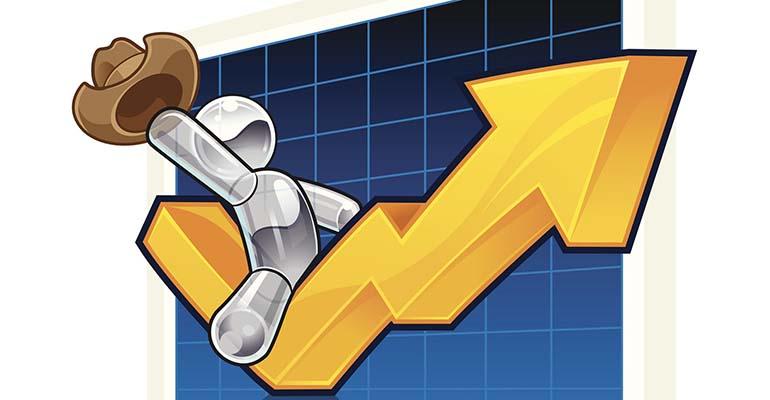June 17, 2022

My daughter finally got to play in a basketball tournament last weekend. Her final game was on Sunday morning and it ended just before lunch time. We were on the west side of Lincoln Nebraska, and decided to bounce into downtown to eat.
To our surprise there wasn’t any traffic, we got a parking space right up front, and there was no wait to be seated. The place was nearly empty, and the wait staff spent more time chatting with each other than waiting tables. Something was wrong.
When we were on the road Memorial Day weekend everything was busy. So to see the drastic change got me curious. I spent some time this week on some economic and investing websites I like to follow. To summarize every article I read, they all agree a crash is coming. They even have a name for it already, they are calling it the credit bubble.
Many CEO’s have announced that they will be cutting their workforce by a minimum of 8-10 percent. Pakistan thinks it may close 40,000 factories due to high energy costs. Of course there was plenty of articles on food inflation, and the rising cost of fuel. Some think we will see fuel continue to go up a dollar every month.
Some farmers have sold grain at these higher prices and are eager to buy up their deductions. That really proves the point of expenses always rise to meet available income doesn’t it. There is plenty of time left in the year to do that. I would hold onto that cash right now, because if these investment authors are right, input costs will cover the deduction side of the equation.
I went to a couple auctions this week and there was more doom and gloom news. The radio was talking about the upcoming recession due to interest rates going up. Then at the sale barn buyers were talking about all the tens of thousands of acres of corn that got hailed out, and we were all showing each other videos of storm damage and long rows of dead cattle. Sale barn gossip estimates over 30,000 dead cattle from the heat. Some people don’t believe all these cattle died from heat and humidity. To me that doesn’t matter because deads reduce the supply and can’t be sold.
With sell/buy marketing we only deal with today, because that is all we know. Any thoughts about the future are just a guess. And if we are honest if we were any good at guessing we would do a much better job making money with cattle than we do. Thing is the uncertainty of the unknown really bothers people, especially when all the news is as gloomy as it is right now.
I do have good news about the future that is for certain. The over/under valued price relationships between things will still exist. This throws the door wide open to do some trading and generate positive cash flow.
I know people are worried the market will drop and how they will handle that. People with sell/buy skills know that market direction doesn’t matter, only utilizing the relationships does. If the market drops, your inventory valuation will drop. This matters to the banker because it makes the balance sheet look messy. The only time it should matter to us is when we retire. Until that point cash flow is king.
The good sell/buy marketers will tell you that it is easier to generate cash flow when the market is dropping. By not freezing up and continuing to trade the cash flow generated helps offset the decrease in inventory valuation. Positive cash flow in a downward spiraling market could lead to some personal herd expansion.
The future will hold opportunity. It just may not be what we envisioned it would be. And because of that reason, coupled with the lack of market literacy, most people will miss it.
Continuing with the bad news/good news theme this week corn got a boost in price. How you view that probably depends on the side of the transaction you are on. Also with new crop hay hitting the market the last couple weeks, it has taken a 40% drop in price. Again which side of the transaction are you on?
A friend called me early one morning telling me he heard that some fats sold for $1.50. I didn’t believe that his information could be correct. It just seemed like too big of a jump in price. Turns out his information was good ($1.49). Seems like the packer has been holding out on us.
Fats have and continue to be good property this year. With that bid and the current Cost of Gain (COG) the entire feeder heifer spectrum is wide open as a good buy back to fats. Eight weight and lighter feeder steers are still over-valued. Just for kicks I ran some cattle squares using a COG of $1.60. 10 weight steers and heifers weighing over 800 pounds still work in that case.
Let’s not miss the other important thing in there. The COG was higher than the sell price of fats when I used $1.60. Last year I got to hear an “expert” give a talk, after I gave mine when I said a certain trade wouldn’t work. He said he’d take that trade all day long because if the COG was lower than the bid price, you have to be making money. Well, in my scenario above he’d freeze up and do nothing and lose money, while I would generate positive cash flow. There are even sell/buy “experts” that have no clue what to do in this situation. They cast it off as “money being under-valued”. With market literacy this kind of situation is fun to be in.
I have no idea what the future holds. What I can tell you is that if the doom and gloom predictions come true, which they probably will since the masses of people are thinking that way, the dumb luck most people rely on to get by will run out. We have got to know what we are doing
Feeder auctions were interesting to watch this week. The first part of the week one auction was down 13 while another auction was up 6 on the same day. By midweek they were all higher. To prove my point from above that market direction doesn’t matter, relationships do, the value of gain was similar between weights at each auction. Some weights were over-valued to others regardless of market direction.
This week feeder bulls were 30 back, and unweaned cattle were 3-15 back.
Due to the heat runs were lighter, and I did not see many bred cows or pairs. The ones I did see were selling a little higher than their intrinsic value. In my opinion the volume of cull cows was high for this time of year.
The opinions of Doug Ferguson are not necessarily those of beefmagazine.com or Farm Progress.
About the Author(s)
You May Also Like






